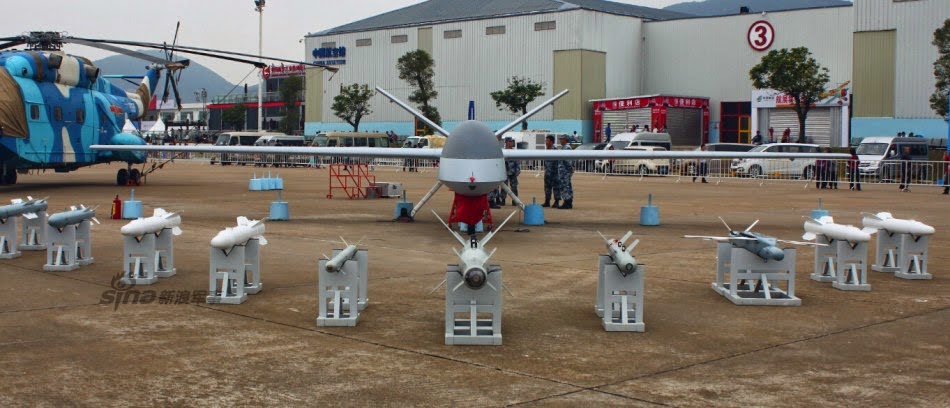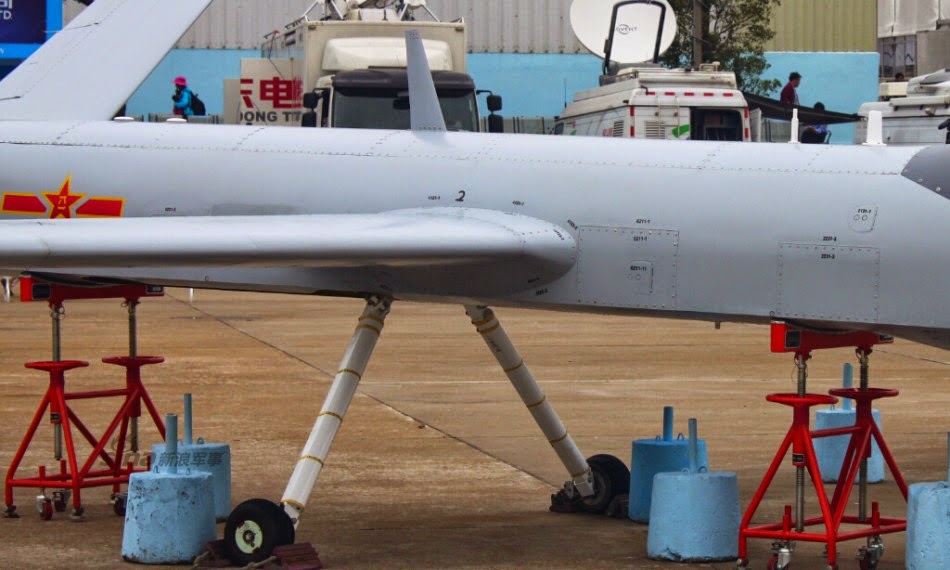A
gang of advanced missiles and a bleeding-edge radar unveiled at a
Chinese air show could mean big trouble for the Pentagon’s best
fighters.
A useful lesson to bear in mind at last
month’s Zhuhai air show—China’s only domestic air and defense trade
show, held once every other year.It was the Shenyang J-31 stealth
fighter, which resembles a twin-engine version of America’s newest
stealth jet, the F-35 Joint Strike Fighter. But the real tricks lay in
Beijing’s growing family of advanced missiles and radars.
The J-31 prototype was hidden except when it was flying, and not much
detail was available. But the display was notable for the eruptions of
smoke from the engines, most likely Russian RD-93s.
That is
important, because until China builds its own fighter engines it cannot
build stealth fighters without approval from Vladimir Putin’s desk. That
includes the Chengdu J-10B, China’s most modern, in-production fighter,
or its bootleg versions of Russia’s Sukhoi Flanker fighter family.
China
says it’s working on indigenous fighter and trainer engines, but the
samples on show were exactly the same as those seen two years ago.
What
was new and important on the Chinese military’s outdoor display line at
Zhuhai was a mix of mature and new technology. And by “mature” I mean
the 1950s-design Xian H-6M bomber, with something suspiciously like a
World War II Norden bombsight visible through the windows of the
bombardier station. But the bomber was surrounded by guided weapons,
some seen for the first time in public. The same went for the somewhat
more modern JH-7 light bomber.
Zhuhai was full of new
missile hardware, from the 3 1/2-ton CX-1 ramjet-powered anti-ship and
land-attack missile down to the QW-19 manportable air-defense system.
(China’s military believes in these small air-defense missiles, both in
their classic standalone form and integrated into small mobile systems.)Not
many of those missiles were individually surprising. The CX-1 is
different in small details from the Russian-Indian BrahMos but very
similar in specifications. Two-stage short-range surface-to-air missiles
borrow the concept invented for Russia’s KBM Tunguska and Pantsyr
systems, and so on.
What is impressive, however, is how many of the new Chinese missiles there are, and how they fit together.
One
visible trend is the re-use of components to meet different mission
needs. Since the CM-400AKG air-to-surface missile appeared at 2012’s
edition of the Zhuhai show, it has gathered a lot of attention as a
high-supersonic anti-ship weapon. This year, the exhibit strongly
suggested that it shares its solid rocket motor and warhead with the
surface-to-surface SY400 ballistic missile, and a passive radar seeker
with the new B611MR semi-ballistic anti-radiation missile. The B611MR,
in turn, has a common motor and controls to the 175-mile-range M20
GPS/inertially guided missile—China’s equivalent to Russia’s
Iskander—and both are intended to use the same mobile launcher and
command-and-control system as the CX-1. Lots of interchangeable parts:
That is how China can roll out so many missile types so quickly.






























